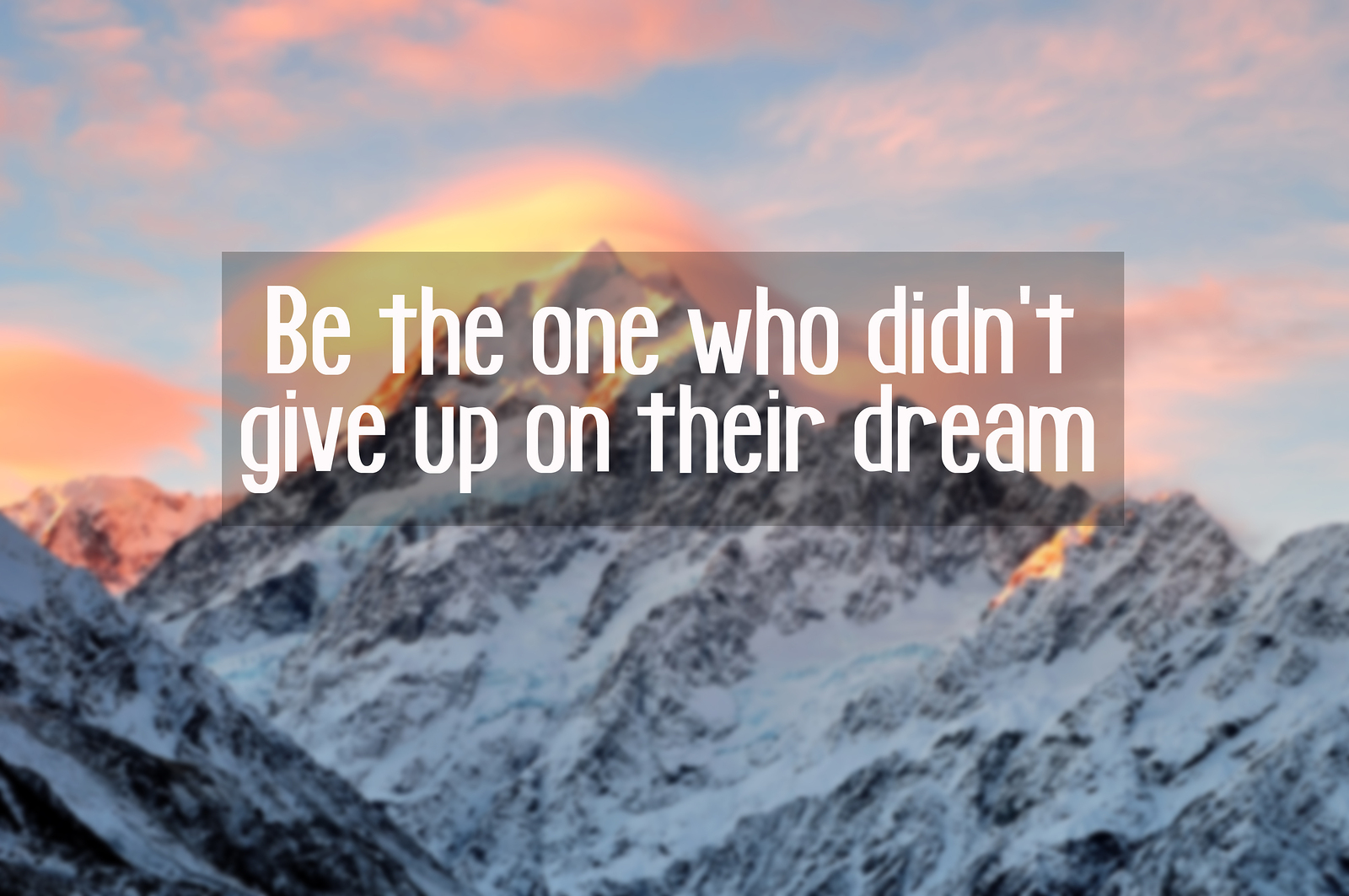There’s a famous song from the 1950s called Sh-Boom by The Chords (and also recorded by The Crew Cuts) and it goes:
Life could be a dream, if only all my precious plans would come true
These lyrics paint a picture of how many people think about their dreams. If only they would suddenly come true. If only my dream life would drop out of the sky one day! If you’re serious about living your dream life this type of mindset won’t help you get what you want. Being intentional and taking action will.
The unfortunate truth about most people’s dreams
Most people are not living their dream life. And this is statistically true. There are many reasons for this. Most people are surrounded by people who have given up on their dreams. And many people live in an environment that doesn’t command their greatness. And they give up when the pathway to achieving what they want isn’t clear.
But, you really CAN have what you want. (Isn’t that what life’s all about anyways?) Life could be a dream if you let it. You never have to settle.
There is a”secret sauce”, a recipe for getting what you want. It’s simple too. But it takes getting out of your own way and trusting the process.

Life could be a dream if you let it: A five step process to getting what you
Step 1: Decide what you want. Be clear and specific on what it is and why you want it
As simple as it sounds the first step is to decide what you want. Most people think about things in life they’d like to accomplish without getting specific about it. They think about what they want when they daydream, when their mind wanders. And, they think about achieving things in “one day, some day” timeframes. They don’t get serious about it with themselves.
So, decide what it is you want. This may take exploring your options. What do you want your dream life to look like? Then, once you’ve done enough researching and considering, commit to an idea.
Committing to an idea doesn’t mean it needs to stick forever. Ideas evolve. Dreams evolve. For instance, perhaps you have a dream home you’d like to one day own in Florida. Then one day after you travel to California you decide you’d rather have your dream home be built there.
Dreams and plans can change. You’re the creator after all, but start somewhere. Decide to go after something in one area of your life today. Be specific, down to the last detail about what you want. When you are specific it helps you measure your progress.
You’ll also need to consider a measurable timeframe for when you could achieve what you want.
Step 2: Chart a course between where you are now and where you want
Once you know in specific terms what you want and how long it will likely take you to get it, it’s easy to plan the most logical actions. Start small. It’s about incremental progress. Be resourceful. What programs/people can you tap into that you already know exist and are around you? If you don’t know where to start where can you go find out (ahem, Google might be a good place to start)
Step 3: Take action
The next thing to do is take action. This is the hardest step for most people. Why? Because people are creatures of habit. We get used to ways of doing things and we have trouble breaking out of the box. Second, we let fear overcome us. Doing things differently can be scary.
How do you overcome biological tendencies for fear and your habitual nature? Become the master of them by learning how you operate. This’ll give you control over the mental barriers that take you out.
Step 4: Evaluate and recalibrate
When you start taking actions you’ll start producing results. The results you produce – good or bad – are a feedback mechanism for your progress in relation to what you want. Sometimes you take an action and learn you have to steer your ship in a completely new direction. Sometimes you validate that you’re on the right track. Pay attention to what you do. Be intentional. Be strategic and you’ll get what you want faster.
Step 5: Just keep going
Persistence! When you haven’t gotten what you want, keep going. Keep going till you get it. No matter how stupid you feel. No matter how alone you feel. Keep going! You’ll get there. Be patient and persistent.
So with that, here are the lyrics of the song called “Sh-boom” and famously known by its famous lyric as Life Could Be a Dream:
Life Could Be a Dream Lyrics – “Sh-Boom”
Life could be a dream, life could be a dream Do, do, do, do, sh-boom Life could be a dream (sh-boom) If I could take you up in paradise up above (sh-boom) If you would tell me I'm the only one that you love Life could be a dream, sweetheart Hello, hello again, sh-boom and hopin' we'll meet again Bom ba, Hey nonny ding dong, alang alang alanga Oh oh oh oh dip, a dibby dobby dip Oh, life could be a dream (sh-boom) If only all my precious plans would come true (sh-boom) If you would let me spend my whole life lovin' you (sh-boom) Life could be a dream, sweetheart (do do do do sh-boom) Every time I look at you Something's on my mind If you do what I want you to Baby, we'd be so fine! Oh, life could be a dream (sh-boom) If I could take you up in paradise up above (sh-boom) And tell me darling I'm the only one that you love Life could be a dream, sweetheart Hello, hello again, sh-boom and hopin' we'll meet again Bom ba, Hey nonny ding dong, alanga langala langala langala Oh oh dip, a dibby dobby dip Oh, life could be a dream, life could be a dream sweetheart Do do do do sh-boom Do do do do sh-boom Do do do do sh-boom Do do do do sh-boom Za be ba da Dip da de da dip ba di Woah oh Zo be ba be be ba bi Woah Zo be ba be be ba Oh, life could be a dream (sh-boom) If I could take you up in paradise up above (sh-boom) And tell me darling I'm the only one that you love Life could be a dream, sweetheart Hello, hello again, sh-boom and hopin' we'll meet again Oh, life could be a dream (sh-boom) If I could take you up in paradise up above (sh-boom) And tell me darling I'm the only one that you love Life could be a dream, sweetheart Hello, hello again, sh-boom and hopin' we'll meet again Bom ba Hey nonny ding dong, alangala langala langala langala (sh-boom) Oh oh dip a dibby dobby dip Life could be a dream Life could be a dream Do do do do sh-boom
Other versions of Sh-Boom – Life could be a dream
Here are the bands that recorded Sh-Boom (Life could be a dream):








